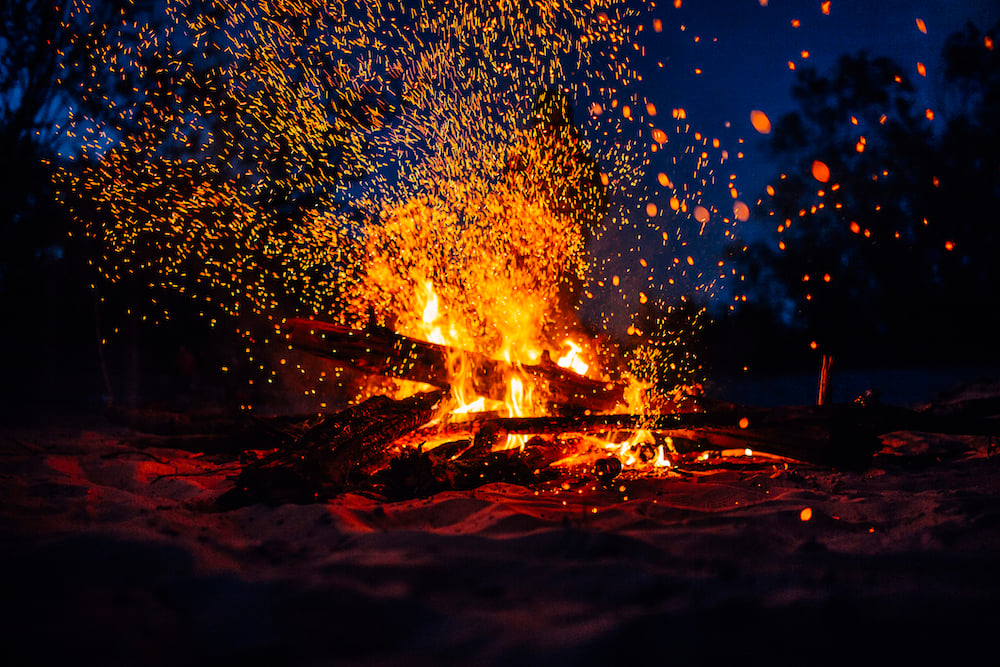
Campfires are cosy. There’s something lovely about all sitting round a campfire, with a clear sky above you and nature all around you. Maybe you’ve got a friend who’s telling a story or playing the guitar (pretty much obligatory for the campfire experience, right?). Luckily, humans have been making campfires since a very very long time ago. That’s probably why they’re still so appealing: they scratch an itch in the primordial part of our brains that just likes burning things.
That said, it’s very easy to completely fail at making a fire. It’s pretty easy to set light to things, but less straightforward to keep the thing lit and growing into a campfire.
What’s the difference between a campfire and any other fire?
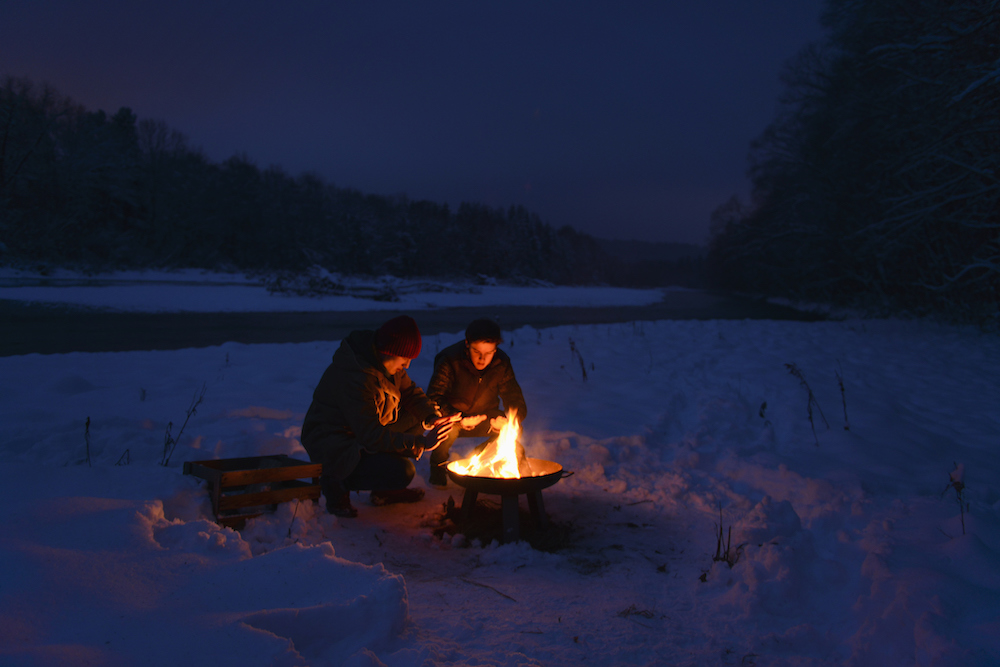
A campfire is, well, a fire that you make when you’re camping. Although it’s not something you should associate with wild camping in the UK. It’s got far more connotations of sitting around in the evening somewhere, gazing into the roaring flames. You can cook on a campfire, but more often than not it’ll be marshmallows or dampers. We’ll come back to those in a minute.
So, we guess the difference between a campfire and any other fire is that you’re probably going for lots of flame. It’ll be big enough that you can fit a few friends around, but not bonfire size. You’ll be burning wood, rather than anything more industrial, and it’ll make enough light that you’ll be able to see the faces of the people opposite flickering in the firelight. Perfect for campfire stories.
How to make a campfire
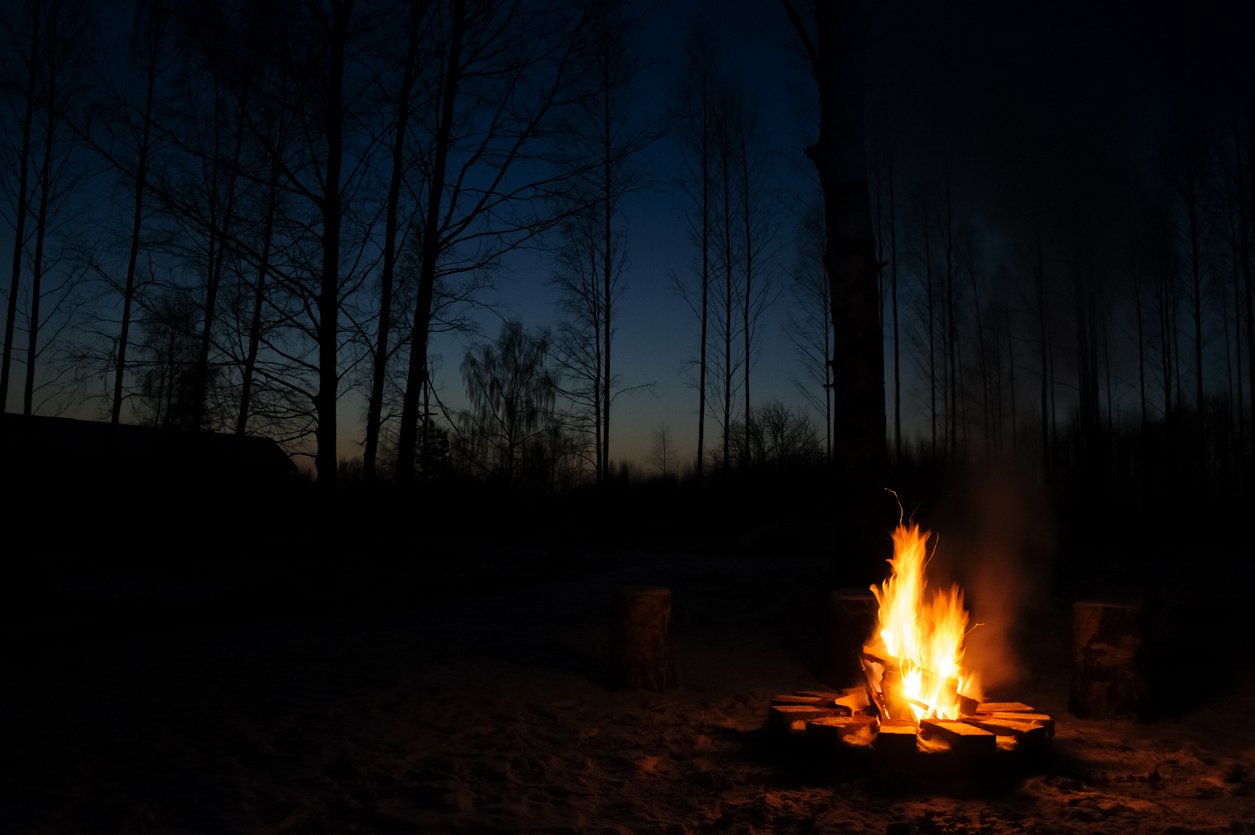
The first step to making a campfire is to find a good spot. You want to find somewhere, ideally, that doesn’t have any grass – like a beach or a clearing in the woods. If you’re in a field make sure to get permission from the owner whose grass you’re about to burn a hole in. Many campsites will have a designated place for fires, so don’t forget to ask! If you’re wild camping, just don’t make a campfire. It’s like leaving graffiti in a national park except no one can claim it’s artwork – and there’s a chance you’ll start a wild fire. Not good. Here’s a guide to How to Pick the Best Camping Stove for Wild Camping.
Okay, so you’ve found a suitable place, with whatever permission you need. If it’s turf, you want to cut a square pit and remove the layer of turf. You’re not digging for Australia here, but you want to make sure you’re able to lift the turf off in one slab. That way the grass can continue merrily growing away until you place it back into its hole again after your fire. You want to make sure your area is clear of anything that could catch fire and spread: dry leaves, twigs, dead grass, dry peat.
It’s far easier to find a place without grass, or to use a fire pit – often provided at campsites – or some other container. This also lifts your fire off the ground, meaning you can toast marshmallows from the comfort of your chair.
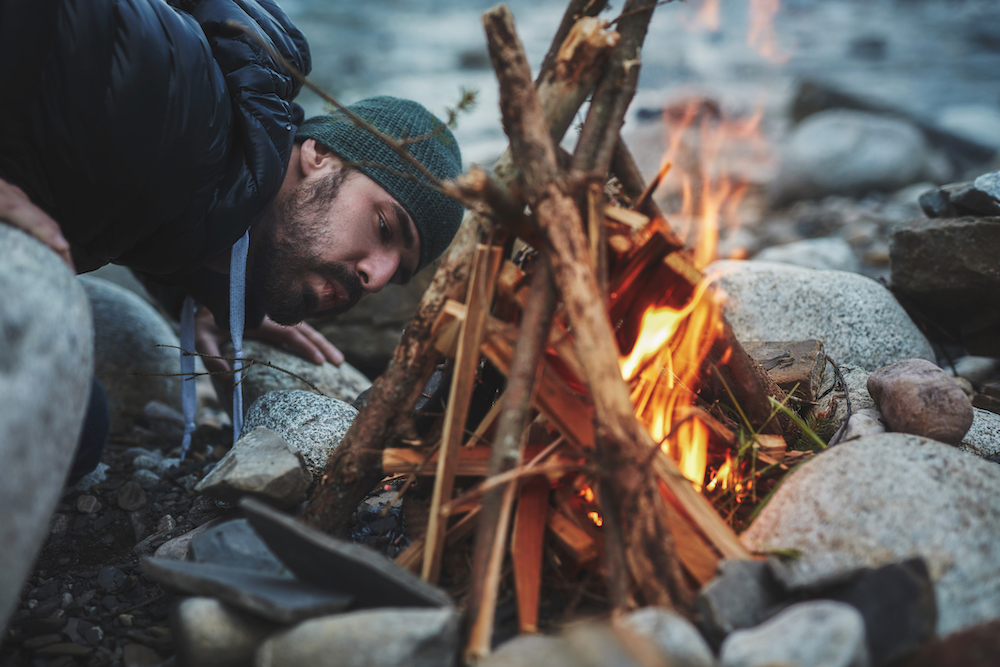
Next up, you need to assemble some wood. Smaller bits of wood are called kindling – these are the thin sticks and twigs that will catch light first. Then you’ll want to collect a variety of dimensions of branches, up to a bit of log. This depends on how long you want your campfire to last. Big logs take a long time to burn, smaller wood burns quicker which helps to get the fire started. It’s important the wood you find is dry (and long dead) or it won’t burn well. You’ll just end up with a face full of smoke and no fire. So no hacking at trees, alright? You can buy wood pre-cut for wood burners that works great too.
Now for the magic. Assemble the start of your campfire with some tinder and a little kindling stacked on top. You might go for a teepee look or a lean-to, but just something that will allow the fire to move from the tinder to the kindling. Your tinder is something that burns very easily. Survivalists will tell you to use wood shavings or dry leaves, but newspaper will do the job very well. Set the tinder alight first and then your fire should grow to light the kindling. Keep adding on more wood, little by little until you have a roaring campfire. Lovely.
Cooking on a Campfire
There are very skilled people out there who will be able to cook a three course meal on a campfire. We take our hat off to them. But in this little guide, we thought we’d give you a couple of really simple quick-start campfire recipes.
Marshmallows
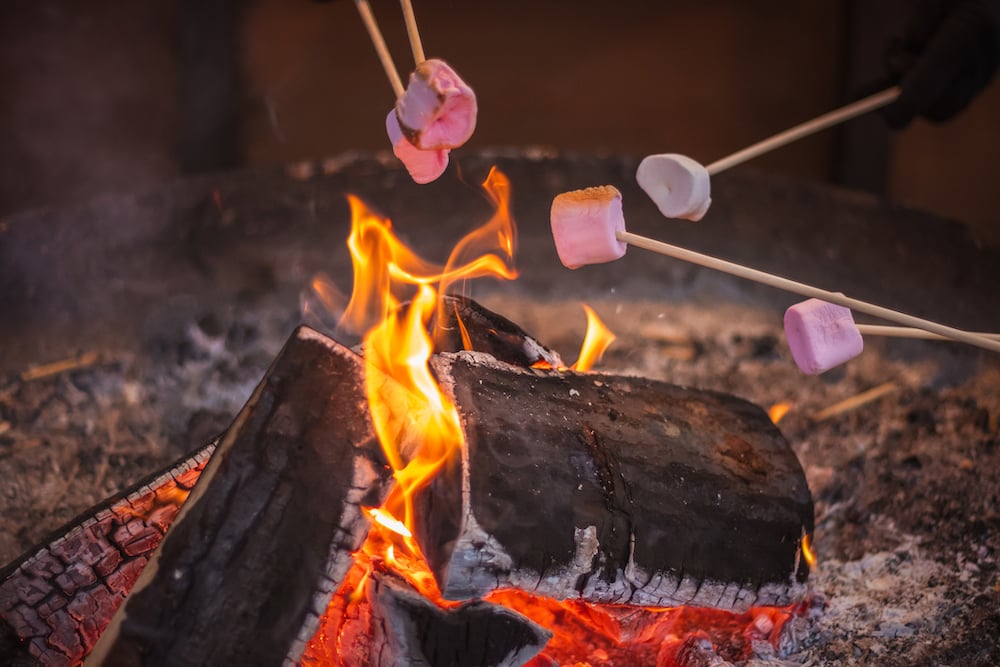
No, we’re not going to tell you how to make marshmallows. Go and buy some from a shop. Then find some suitably long and thin sticks near your campfire. Place a marshmallow on the end of your stick. Put marshmallow in fire. Ta-da! Eat your heart out Gordon Ramsay.
Marshmallow connoisseurs will tell you that you need to wait for the campfire to be smouldering before you place your marshmallow into the fray. You want to aim for glowing embers and heat, not flames. Slowly rotate your marshmallow, giving an even melt inside and a light browning outside.
That said, if you are a bit of a loose cannon you can just stuff your marshmallow into the fire. It’ll be black on the outside and raw on the inside, but who cares! If it catches light, blow it out – that’s called flambé isn’t it?
Dampers
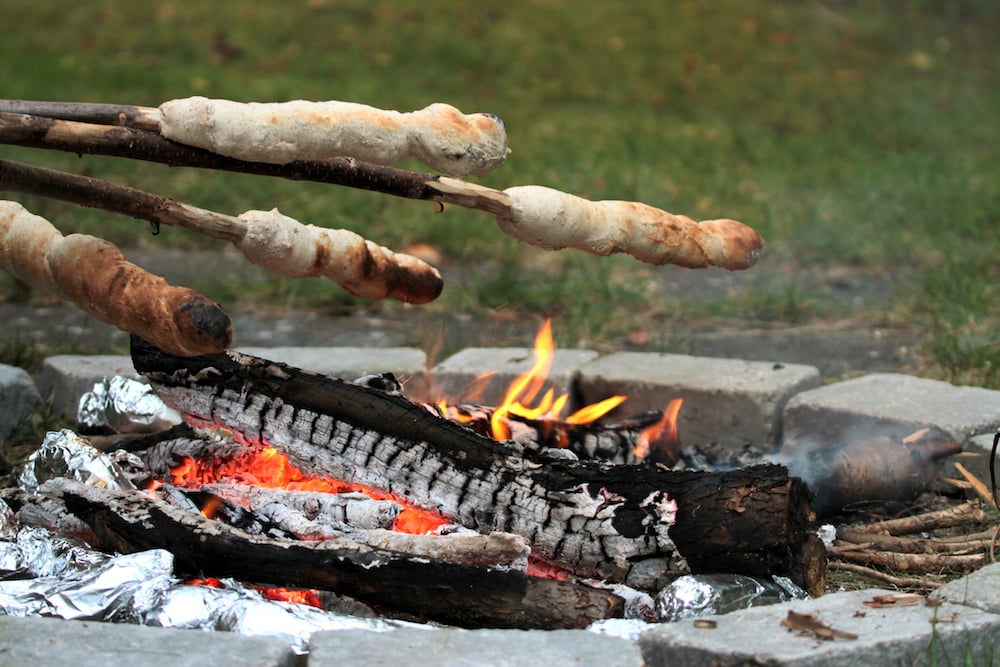
For something slightly more sophisticated, you can cook dampers (aka bread twizzles) on a stick. It’s not hard – it’s the kind of thing they teach in Brownies and if a seven year old can do it, we believe you can too. For a really basic recipe, simply mix self-raising flour and water. Put the flour in a bowl and add water slowly (say a tablespoon at a time), mixing as you go. When the dough binds together, you’re ready to go.
For a more advanced recipe, you can essentially make bread, but it takes a bit more time to prepare. You’ll need bread flour, warm water, quick yeast and maybe some sugar to speed things up. Put the flour and yeast in a bowl, add an optional sprinkle of water, then again add warm water until the dough binds together. Knead it for five minutes, then put it back in the bowl to rise. You might use a bit of sunflower oil to stop it sticking to the sides of the bowl.
To cook dampers, take a clump of dough and roll it into a long sausage with your hands. Then wrap the dough around a suitable stick to hold over the campfire. This takes a bit longer to cook than marshmallows and it’s definitely worth waiting for the embers of the fire – rather than getting burnt and gooey bread.
Chocolate Bananas
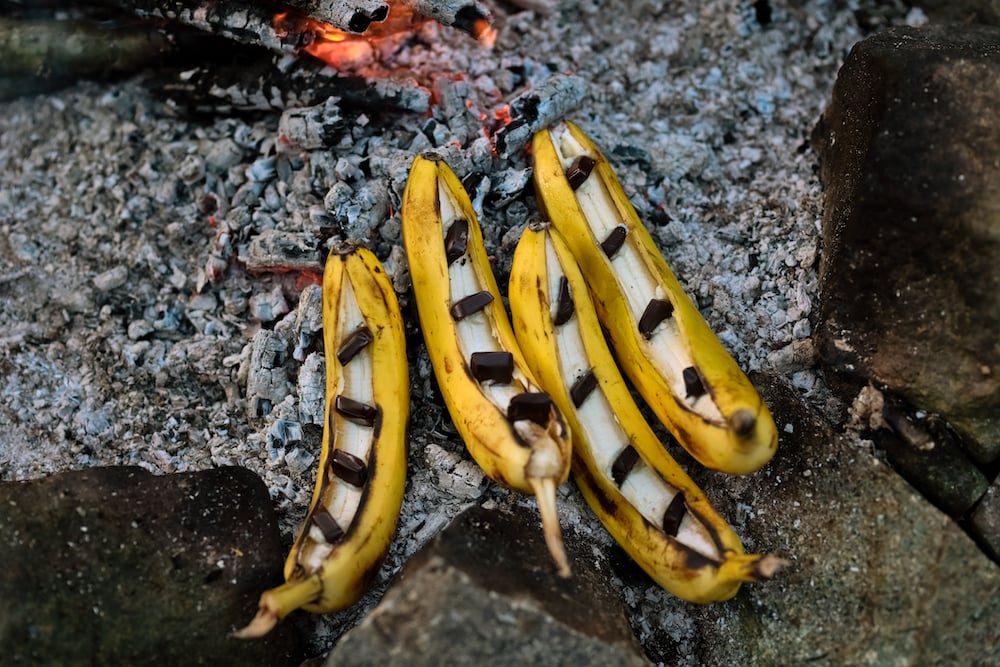
Finally, for an idea that doesn’t involve holding a stick into a campfire, let’s talk about chocolate bananas. For this you need (unsurprisingly) chocolate, bananas and some tin foil. Take a banana and split the skin down one side. In the opening, place a few pieces of chocolate. Then close the skin as best you can and wrap the banana in foil.
Place your foil-wrapped chocolate bananas into your campfire. While you tell stories round the fire, your chocolate will be melting and your bananas heating up. Take the bananas back out the fire when they’re ready. It goes without saying that the foil will be hot and it’ll be pretty hard to explain that injury at A&E, “Well, you see, we had these bananas…”.
You’ll be left with a lovely, warm, gooey mess that tastes great but is best eaten with a spoon. This recipe can be adapted for other types of food that you’d normally bake – like baked potatoes and cheese – if you’re not a big fan of bananas.
Now you’ve got everything you need to be king of the campfire. Time to put your skills to the test on one of our adventure holidays.


